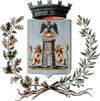Treviglio
| Treviglio | ||
|---|---|---|
| Comune | ||
| Città di Treviglio | ||

Basilica of San Martino.
|
||
|
||
| Location of Treviglio in Italy | ||
| Coordinates: 45°31′N 09°36′E / 45.517°N 9.600°E | ||
| Country | Italy | |
| Region | Lombardy | |
| Province / Metropolitan city | Bergamo (BG) | |
| Frazioni | Battaglie, Castel Cerreto, Geromina, Pezzoli | |
| Government | ||
| • Mayor | Juri Imeri | |
| Area | ||
| • Total | 32.22 km2 (12.44 sq mi) | |
| Elevation | 125 m (410 ft) | |
| Population (31 December 2015) | ||
| • Total | 29,924 | |
| • Density | 930/km2 (2,400/sq mi) | |
| Demonym(s) | Trevigliesi | |
| Time zone | CET (UTC+1) | |
| • Summer (DST) | CEST (UTC+2) | |
| Postal code | 24047 | |
| Dialing code | 0363 | |
| Patron saint | Saint Martin | |
| Saint day | last day of February | |
| Website | Official website | |
Treviglio (Italian: [treˈviʎʎio], Eastern Lombard: Treì) is a town and comune in the province of Bergamo, in Lombardy, northern Italy. It lies 20 kilometres (12 miles) south of the capital city, in the lower territory called "Gera d'Adda" , marked by the Adda and the Serio rivers.
With approximately 30,000 inhabitants, the comune is now the second most populous town in the province.
It is also called "The tractor town" for the presence of the SAME Deutz-Fahr headquarters or seldom "The town of courtyards" for their massive presence in the Old town.
The town is divided in five main quarters: Old town, West zone, North zone, the recent built East zone and the PIP (Industrial Zone). On the northern side lie four frazioni: Geromina, Castel Cerreto, Battaglie and Pezzoli. Once the village of Castel Rozzone also was a frazione of Treviglio.
The coat of arms is composed by a crenellated tower, representing the city with its ghibelline past, flanked by two golden lions, representing the free and valorous citizens, topped by an eagle, symbol of the privileges obtained by the Holy Roman Empire, laying a pig, as symbol of the prosperity achieved.
The area where Treviglio lies was firstly inhabitated by Celtic tribes, in particular Insubres. During the conquest of the Cisalpine Gaul (Gallia Cisalpina) by the romans was constructed a castra to guard an important trading crossway and the near villages, then also a roman settlement was founded and grew through trade and local productions. After the arrival of the Lombards the territory was included in the Fara Gera D'Adda (Fara was the administrative division in the Lombard system). After the fall of the Kingdom of the Lombards became part of the Holy Roman Empire.
...
Wikipedia


